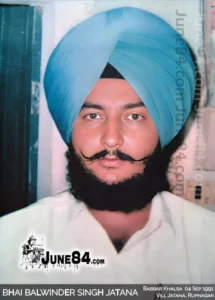
Knitwear manufacturing has always been a central part of the global textile and fashion industry. From traditional hand-knitted sweaters to high-tech machine-produced garments, knitwear production reflects a perfect blend of artistry, technology, and sustainability. The demand for comfortable, stylish, and eco-friendly knitwear has grown significantly in recent years, making the manufacturing process more advanced and diversified than ever before.
This article explores the complete journey of knitwear manufacturing – from raw materials to finished products, covering techniques, technologies, challenges, and the future of the industry.
What is Knitwear Manufacturing?
Knitwear manufacturing refers to the process of creating garments and textiles through knitting – the technique of interlooping yarns. Unlike woven fabrics that are interlaced, knit fabrics offer stretch, softness, and comfort, making them ideal for everyday wear, sportswear, and luxury fashion.
The manufacturing process can range from hand knitting in small-scale artisan workshops to automated knitting machines in large factories. Today, global knitwear production includes sweaters, cardigans, socks, scarves, dresses, and even industrial textiles.
The Importance of Knitwear in Fashion and Lifestyle
- Comfort and Flexibility: Knitwear is breathable and adapts to body movements.
- Seasonal Versatility: From lightweight cotton knits for summer to heavy woolen garments for winter, knitwear suits all seasons.
- Fashion Diversity: Knitwear is no longer just functional; it has become a style statement.
- Sustainability Factor: With natural fibers and recyclable yarns, knitwear is at the center of eco-fashion.
Raw Materials in Knitwear Manufacturing
The quality of knitwear depends largely on the type of yarn used. Common fibers include:
- Natural Fibers: Cotton, wool, silk, alpaca, and cashmere.
- Synthetic Fibers: Acrylic, polyester, nylon, spandex.
- Blended Yarns: A combination of natural and synthetic fibers to balance comfort, durability, and cost.
- Eco-Friendly Fibers: Organic cotton, bamboo, hemp, and recycled polyester.
Manufacturers carefully select fibers based on the garment’s purpose, climate, and market demand.
Steps in the Knitwear Manufacturing Process
Yarn Preparation
The process begins with sourcing and preparing yarn. The yarn is dyed, spun, and tested for quality.
Design and Pattern Development
Fashion designers create knitwear patterns using CAD (Computer-Aided Design) software, ensuring precise stitch calculations and fabric behavior analysis.
Knitting
- Flat Knitting: Produces panels for sweaters and cardigans.
- Circular Knitting: Creates seamless garments like t-shirts and socks.
- Warp Knitting: Used for technical textiles and sportswear.
Linking and Assembly
Different knitted panels are linked or sewn together. High-quality knitwear manufacturing often uses hand-linking for a seamless finish.
Washing and Finishing
Garments are washed, steamed, and treated to improve softness, shrink-resistance, and durability.
Quality Control
Every piece is inspected for defects in stitching, measurement, and finishing before packaging.
Modern Technology in Knitwear Manufacturing
Today’s knitwear industry is driven by advanced technology such as:
- 3D Knitting Machines: Create seamless garments in a single step.
- CAD Software: Helps design complex patterns and styles.
- Automation & Robotics: Reduce production time and human error.
- Smart Textiles: Integration of sensors into knitwear for sports and healthcare applications.
Knitwear Manufacturing Hubs Around the World
- Italy: Known for luxury knitwear brands like Missoni and Brunello Cucinelli.
- China: A global leader in large-scale knitwear exports.
- Bangladesh & India: Major suppliers of affordable knitwear for global markets.
- Turkey: Strong presence in cotton knitwear and European exports.
- UK & USA: Focus on niche, sustainable, and luxury knitwear.
Challenges in Knitwear Manufacturing
- High Production Costs for premium fibers like cashmere.
- Sustainability Issues with synthetic fibers and water-intensive processes.
- Fast Fashion Pressure forcing manufacturers to produce cheaper garments faster.
- Skilled Labor Shortages in specialized hand-finishing techniques.
The Future of Knitwear Manufacturing
The knitwear industry is moving toward sustainability, digitalization, and innovation. Key trends include:
- Eco-Friendly Production: Use of organic yarns and low-impact dyes.
- Circular Economy: Recycling old knitwear into new fibers.
- 3D Knitting on Demand: Custom-fit garments with zero waste.
- Luxury Personalization: Bespoke knitwear with unique patterns.
- Smart Knitwear: Clothing that monitors body temperature, heart rate, and performance.
Sustainability in Knitwear
With global awareness about fashion’s environmental footprint, knitwear manufacturing is adopting greener practices:
- Recycled Yarns from plastic bottles or old garments.
- Waterless Dyeing Techniques to save resources.
- Fair Trade Practices ensuring ethical wages for workers.
- Carbon-Neutral Factories powered by renewable energy.
These practices not only improve brand image but also meet the demands of conscious consumers.
Why Knitwear Manufacturing Matters
Knitwear is more than just clothing – it represents comfort, cultural heritage, and innovation. From luxury fashion runways in Milan to mass-market stores worldwide, knitwear reflects the textile industry’s ability to evolve with changing consumer needs.
As technology advances and sustainability becomes a global priority, knitwear manufacturing will continue to thrive, offering both traditional craftsmanship and futuristic solutions.
Conclusion
Knitwear manufacturing stands as a bridge between art and technology. From the careful selection of fibers to the precision of knitting machines, the industry continues to innovate while honoring its roots in craftsmanship.
With growing demand for sustainable fashion, the future of knitwear looks promising. Manufacturers who embrace eco-friendly materials, digital tools, and customer-centric designs will not only survive but lead the way in shaping the textile industry of tomorrow.



